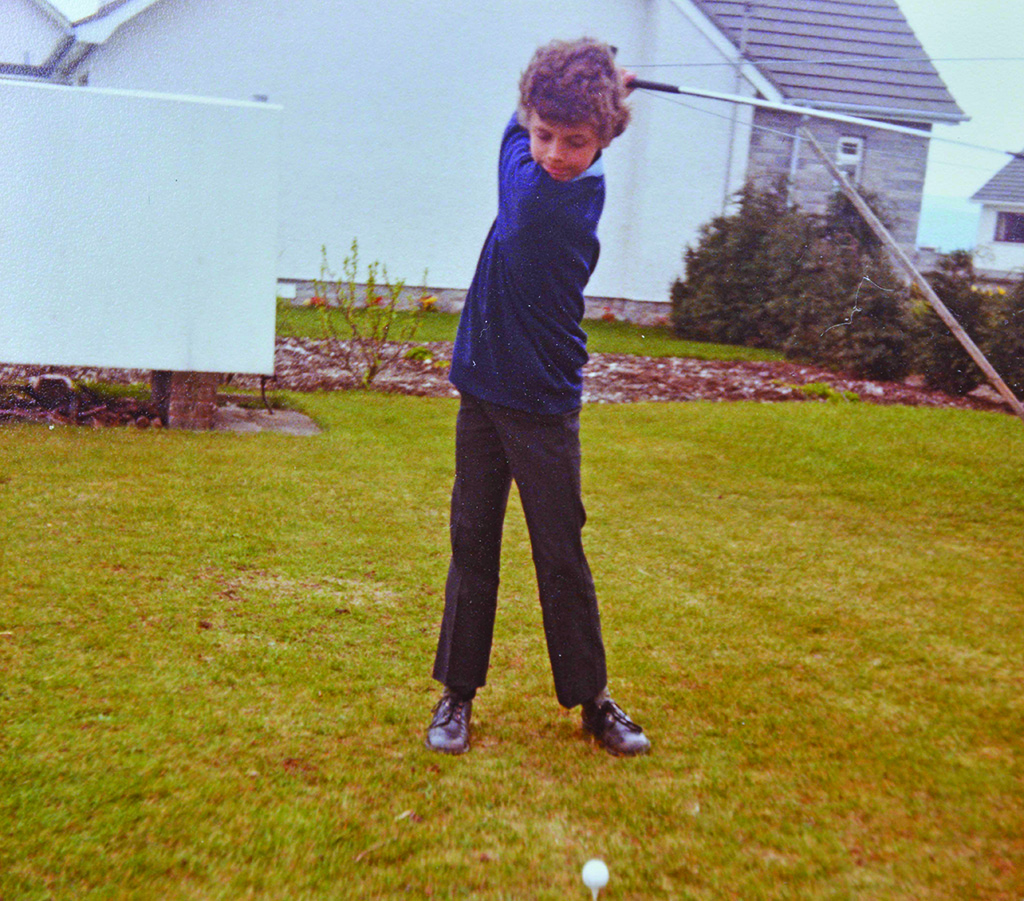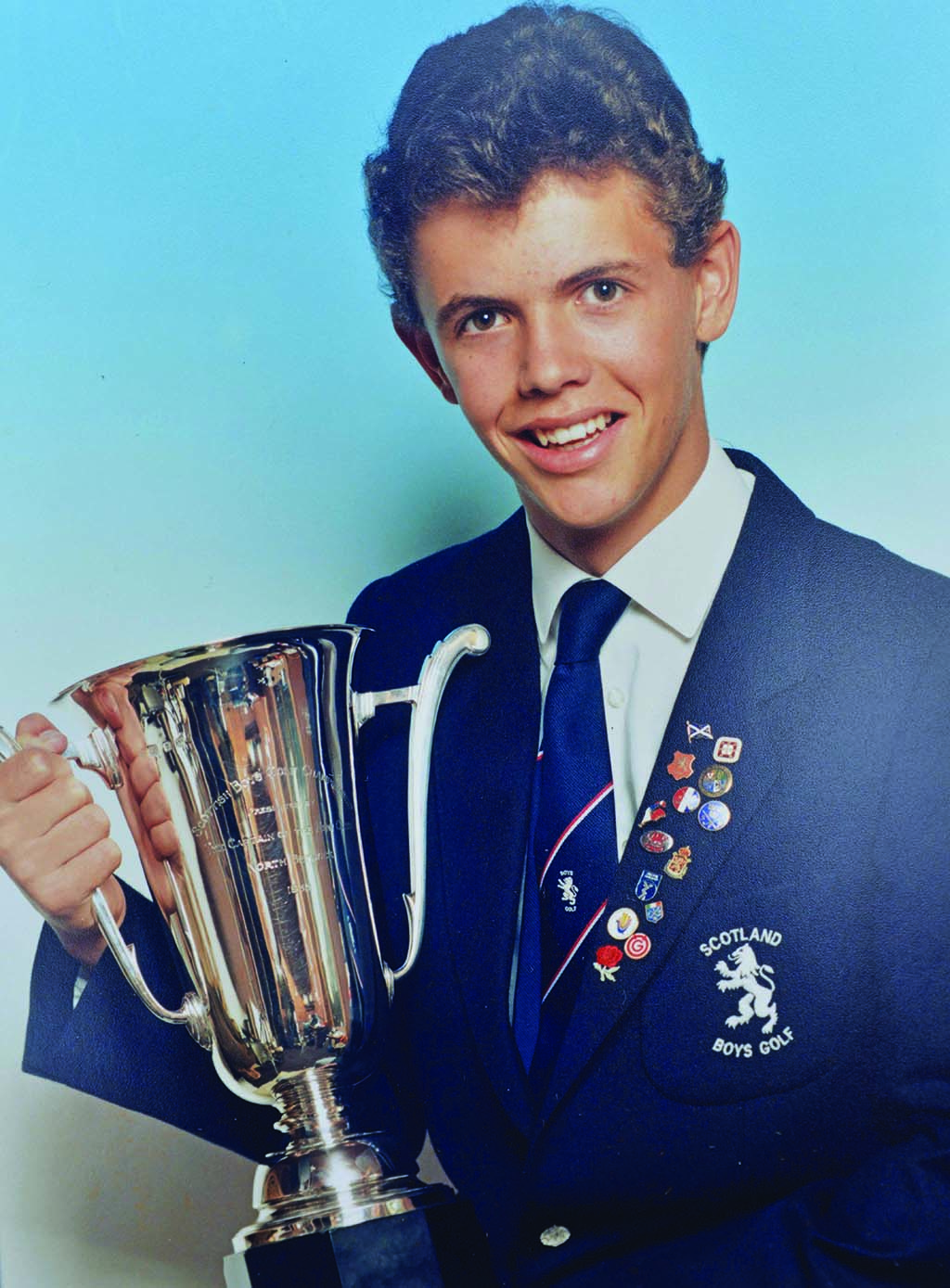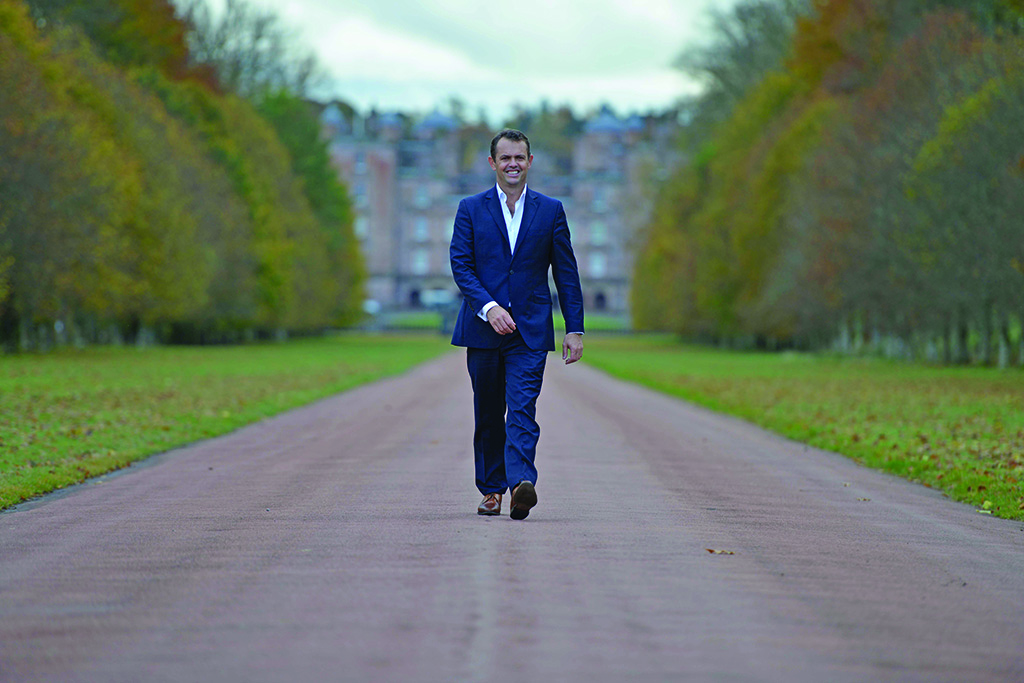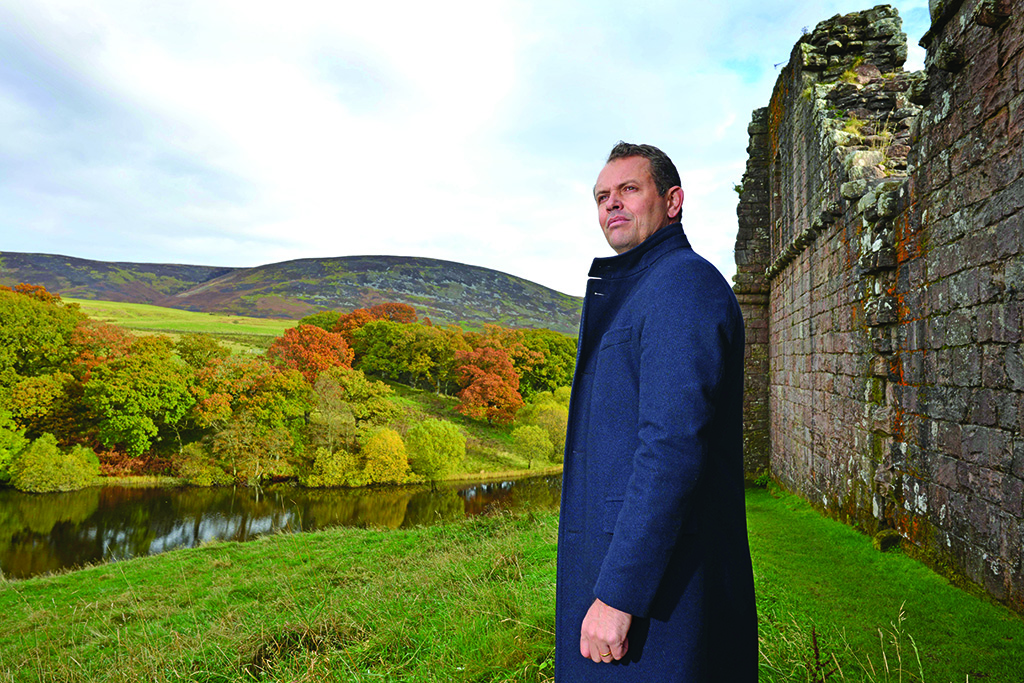
Taking the rough with the smooth
Growing up in Dumfries and Galloway with a golf-mad family set Andrew Coltart on the road to the Ryder Cup and a successful career on the professional circuit.
I was a member of my village golf club before I was even born. It’s not that I had particularly pushy parents, just that I come from a family that really loves golf.
My father was from Thornhill, which is a village about ten miles north of Dumfries, and my mother was from Sanquhar, which itself is just north of Thornhill.
I was born in Cresswell Maternity Hospital, in Dumfries, and grew up in Thornhill. It was a lovely rural farming community where everybody knew everybody else. The village has a population of about 2,000 – it’s very small and very friendly. It’s basically just a main street, with a few streets off it. There are some great shops and several good pubs.
It was a great place to be a kid because we could just go out and run around and we had nothing to be scared of. I was a pretty good kid and fairly well behaved. I didn’t get into trouble or smashing a window when I was playing football in the school grounds. There was no running from the police or anything like that.
School was fine. It had some great characters. It was close enough to walk to, but it wasn’t a little village school – it was huge, and its catchment area was all the rural areas for miles around. I had dreams and ambitions, like all kids, but my concentration levels were fairly poor.
I left with about eight O-grades and a couple of Highers. Not everyone is academic or has the capacity to learn from a textbook so if you show promise or have an aptitude for anything else, that should be encouraged.
But I couldn’t help feeling that if I showed promise in anything outwith schoolwork, it was almost frowned upon. This was also around the time of the notorious teachers’ strikes of the early 1980s, so there weren’t many opportunities for extra- curricular activities anyway. Despite this, Thornhill was pretty well represented in a number of sports – football and rugby, in particular.

Andrew had an impressive swing, even at an early age (Photo: Andrew Coltart)
It was a very sporty area to grow up in. There were a couple of big football pitches at one end of the village, and in the summer they were full of kids kicking balls about, using jumpers for goalposts. It’s too bad that these days you often find ball games are discouraged in parks, making it even harder to get kids engaged with the outdoors.
I played badminton for the county, and football, until I was about 12. But there were two or three players in our team who wouldn’t pull their weight and I didn’t like having my weekends ruined by guys who were only trying half as hard as I was. Of course there were always a few kids who preferred to hang around the town causing mischief, but I was never part of that crowd – I was too busy playing golf.
I would go up to the golf course almost every time my father did, which was pretty regularly. At one point he got himself down to a handicap of one. Before the strikes put an end to it, one of my primary school teachers, Margaret Bulmer, would always make sure there were golf competitions for any pupils who liked the game.
We’d also have inter-school tournaments. I would play golf at every opportunity. Every weekend and during school holidays I would cycle to the golf club – we only lived half a mile away. The members didn’t mind the juniors playing; as long as we knew our place, we were never turned away, and we could basically play as often as we liked, so there was a good atmosphere at the club. I’d been doing that since I was about nine years old.
I was in my early teens when I began to show real promise. When I was around 13 I won the South of Scotland Junior Championship (I then won it for about five years in a row). But it took dedication and practice: every day during the summer I would play a minimum of 54 holes.

Andrew Coltart was he proud winner of
the Scottish Boys’ Golf
Championship, 1986 (Photo: Andrew Coltart)
I knew I was pretty decent but it wasn’t until I was 16 that I won the National Boys’ title, which is when I decided to carry on with a view to trying the game professionally. I hung on as an amateur until I was 21, when I played in the Walker Cup – considered the pinnacle of amateur golf – and then, in 1991, I turned pro.
With hindsight, I would say that if you do turn pro, it should only be when you are playing well. When I turned pro, my game had stalled a bit, so my first year on tour was pretty difficult. I won a grand total of £9,363 and 17 pence, which didn’t quite balance the books but it was an important learning experience.
One of the high points of my golfing career was competing in the Ryder Cup. Arguably, having that on your CV says more than winning any individual tournament because the Ryder Cup has become such a spectacle. And even though we lost, and I only played 16 holes and one match, it was still an incredible experience.
I also played those 16 holes against the best player in the world at the time, Tiger Woods. And that was definitely running through my mind the night before. He was on an eight-tournament winning streak, so I was psychologist and golfer that night. Match play is great, because on your day you can beat anyone – I didn’t beat Tiger but I was delighted with the way I played.
There was one notorious incident, when my ball was lost just off the fairway, although I’m not daft enough to think that that would have made such a huge difference to the outcome of the game – I just found the whole thing a fantastic experience.
I lived in Thornhill until I was 18. I then went to college in America for a couple of years. My family still lived in the village, so I went back there frequently. I played the Tour for about three years before I met my wife, and we moved to the London area and settled there for about ten years. We moved back to Scotland in 2006.

Andrew Coltart striding down the main drive at Drumlanrig Castle, which is a couple of decent drives from Thornhill Golf Club (Photo: Angus Blackburn)
My parents are still in Dumfriesshire, and although I’m not there as often as I’d like, my kids are there more regularly. And when I do go across I want to spend time with my parents rather than go out and play the golf course.
The course at Thornhill has come on immensely over the years and, importantly, it’s a fun place to play – and that’s how golf should be. It’s a proper members’ course, where you have a real chance of making a birdie, or par, and not where you lose all your golf balls and never want to play again.
Dumfries and Galloway has a number of other excellent courses. There’s Dumfries and County, for example; Powfoot and Southerness are two magnificent courses; Creachmore near Stranraer is stunning too. And then we have others like Moffat, which is a wee gem; the views are spectacular. They are all nice, friendly and enjoyable courses to play although I didn’t really venture too far out of Thornhill when I was younger.
One of the main reasons for this was that it took me six attempts to pass my driving test (there’s a joke in there about me not being a great driver – I could always hit it fairly straight, just not very long). I go up to Sanquhar every now and then as it’s a lovely little place with a nice course and a good community.
The area has a lot of history, right back to Black Douglas, Robert the Bruce and the Red Comyn. Bruce murdered Comyn – a pretender to the throne – at Greyfriars in Dumfries. Robert Burns also spent time at Ellisland Farm, which is between Dumfries and Thornhill. I wonder if that was where he came across his wee mouse when he was harvesting.

Dumfriesshire is a historic county that has a vast number of ruined castles
There are a lot of ruins, historical sites and castles in Dumfries andGalloway. Drumlanrig Castle is a fantastic place to take the kids, and it has one of the best art collections in the whole world. It’s a lovely estate and well worth a visit. Rockcliffe, on the Solway coast, is another beautiful little place to spend time.
This is not a mountainous part of Scotland; it’s full of rolling hills and fields, and slopes gently down to the sea. I think we’re really lucky.
I grew up at a time when fine dining hadn’t really taken off in Britain, let alone in rural Dumfriesshire. We were definitely a pizza and chips kind of family. These days, though, things have improved considerably on the eating and drinking front: in Thornhill, for example, you’ll be well looked after in the Buccleuch & Queensberry Hotel, or at the Thornhill Inn, which I remember as the George Hotel. The Cally Palace, near Gatehouse of Fleet, is a great place to eat. Best of all, if you stay there, you can enjoy their private 18-hole golf course.
Life doesn’t get any better than that.
This feature was originally published in 2013.
TAGS

